Winter in the Langhe: sustainability, innovation and tradition in vineyard work
With the arrival of spring we take up familiar habits; one of these is strolling among the vines in the sanctuary that is the Langhe.
We’re among the vines of the Josetta Saffirio estate run by producer Sara Vezza, here in Monforte d’Alba, on the Castelletto hill, where the vines already show the results of winter work.
We’re in the heart of the estate’s five hectares of vineyard, among the rows of Nebbiolo that are the source of the estate’s most prestigious wines. Some of these vines have been adopted by wine lovers who have signed up for the Adopt a row of vines project and have thus acquired the opportunity to produce an excellent Barolo and participate in cellar life.
A vineyard requires infinite attention and care that revolves around the natural cycle of the plant.
Over the winter, work in the vineyards requires great commitment and effort on the part of the winegrowers to prepare the vines for optimal growth in the coming year.
Each vineyard has different requirements that depend on many factors, and these result in various agricultural practices developed by each estate and which together, form the estate’s production philosophy.
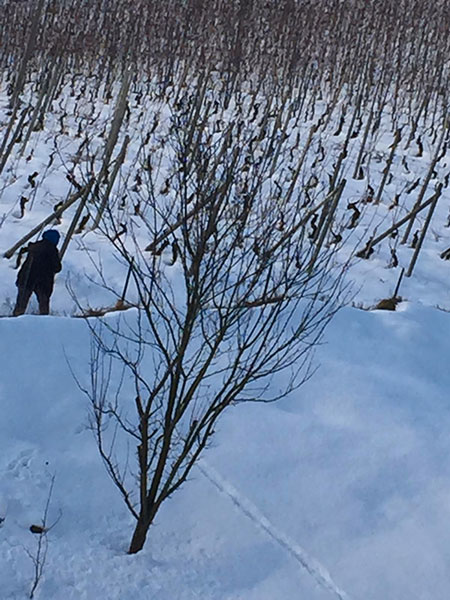
A sustainable winter in the vineyard
The vines hibernate in winter: it is the rest period after months of effort that culminate in the harvest. It is essential to the development of new buds for the next season’s grape clusters. Both man and nature play important roles in this process.
This great responsibility for the land is at the heart of Sara Vezza’s production methods. This translates into a constant commitment to research and experimentation to derive techniques that respect the vineyard and the soil, as well as the consumer.
These are tested during the winter resting period and added to the established biological regime, which already eschews the use of pesticides, chemical insecticides and herbicides.
One of the first winter jobs is putting miniskirts on the vines in the southeast-facing vineyards.
When spring arrives these prevent cutworm larvae from climbing up the vines and attacking the new buds. They are a good investment both in economic and ecological terms.
In January the first snow fell, the crisp air tingling lungs as the boots of each grower sank into the mud. Despite the cold it is the time to prune–one of the most important jobs in the vineyard–to remove the old parts of each vine to make way for the new, reduce the number of buds to control fruiting and to tidy each plant so that sunlight can reach each part.
Though laborious, pruning reaps great returns: it is indeed the preparation for the next harvest.
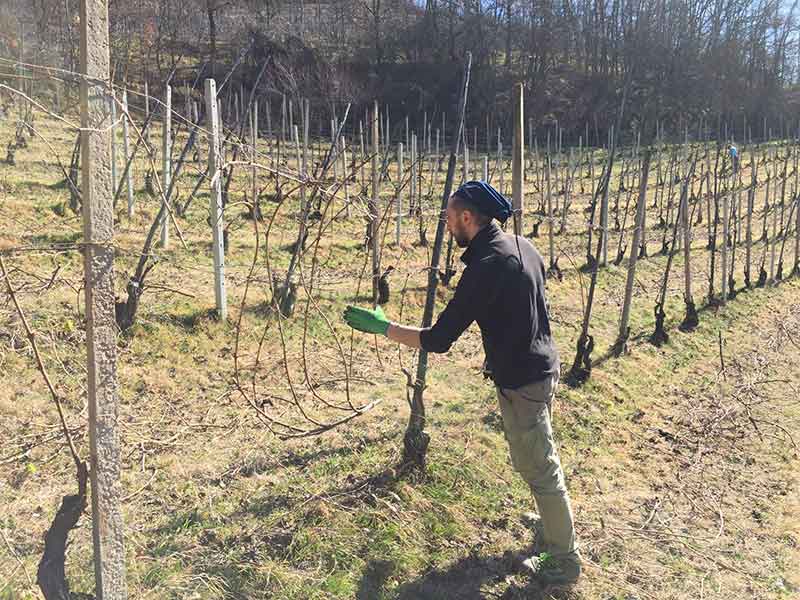

After the pruning, branches are cleared and the rows tidied. In the meantime, temperatures rise and the shoots lengthen. The fruiting canes are tied to the trellises, so that the branches don’t snap.
Anti-hail nets are then installed to provide extra protection.
We dedicate March to working the land: fertilising and subsoiling, planting green legumes and mulching all took place during this last month.
Maintaining a natural ecosystem
All organic vineyards include digging in green manure, a completely natural technique that increase the fertility of the land. This year Sara Vezza’s winery has decided to plant nitrogen-fixing clover and peas between the rows, creating biodiversity and improving root microorganisms to enrich the soil.
https://www.facebook.com/josettasaffirio/videos/1681213045511034/
The estate looks to maintain the natural ecosystem of the vineyard, preserving biodiversity, a key aspect in viticulture often ruined by intensive methods but which offers numerous advantages to the land, to production and to consumer needs.
Vine growth and innovation in sustainability
The rekindling of the vine cycle is a magic moment. Strolling between the rows you can see new life awakening as the vines begin to weep, with tears of sap forming where the shoots have been pruned in the winter months.
The whole of Nature manifests herself in this single tear, reminding us that we are in the midst of the rebirth of life and as such it must be respected and looked after.
This year temperatures are exceptionally high and the vine cycle is in advance. There were buds already at the beginning of March, meaning that pheromone repellents for leafhoppers and vine moths must be dispensed earlier.
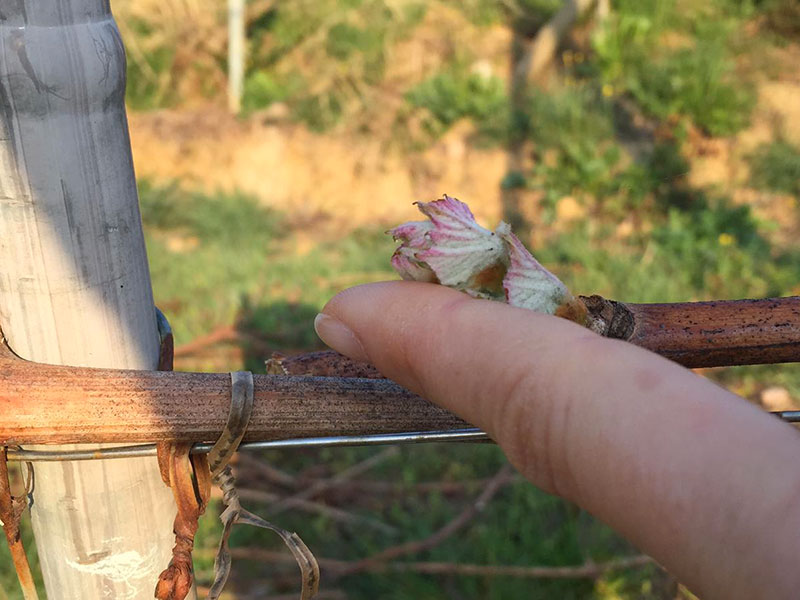
As the first buds appear so do cutworms.

This is a photo from the beginning of March, during a nighttime inspection by the Josetta Saffirio team, showing cutworms climbing Nebbiolo vines towards the buds.
To further their commitment to sustainability, this year the Josetta Saffirio Winery has developed new techniques, beyond normal organic practices, to defend the vines. These employ algae and medicinal plants to stimulate the immune responses of the vines. These are a good, natural alternative to other substances which can be damaging for both man and nature.
These methods show producer Sara Vezza’s awareness of the huge responsibility for the future in terms of environmental conservation. An estate is always in touch with nature and earns its sustenance from it, an inexhaustible but fragile resource that should be carefully managed and protected every day.

In the growing dusk, the hills cradle the new spring moon. We finish our walk with a long, last look at the pale green mosaic of the vineyards, with their ordered and symmetrical rows of vines like débutantes ready for the beginning of summer.
We retrace our steps filled with an awareness that the pact between man and nature will bear fruit once again.
We return to the Josetta Saffirio cellar with Sara for a tasting of new wine yet to be released on its journey.




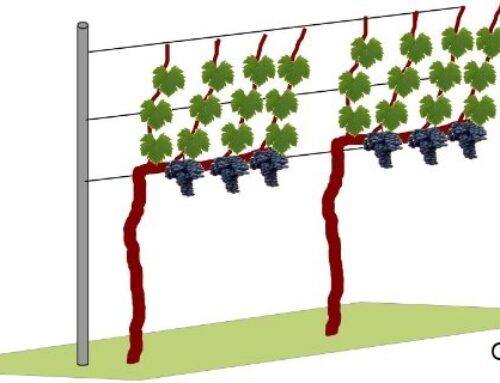

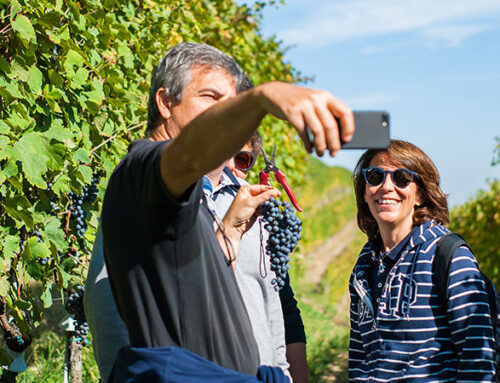







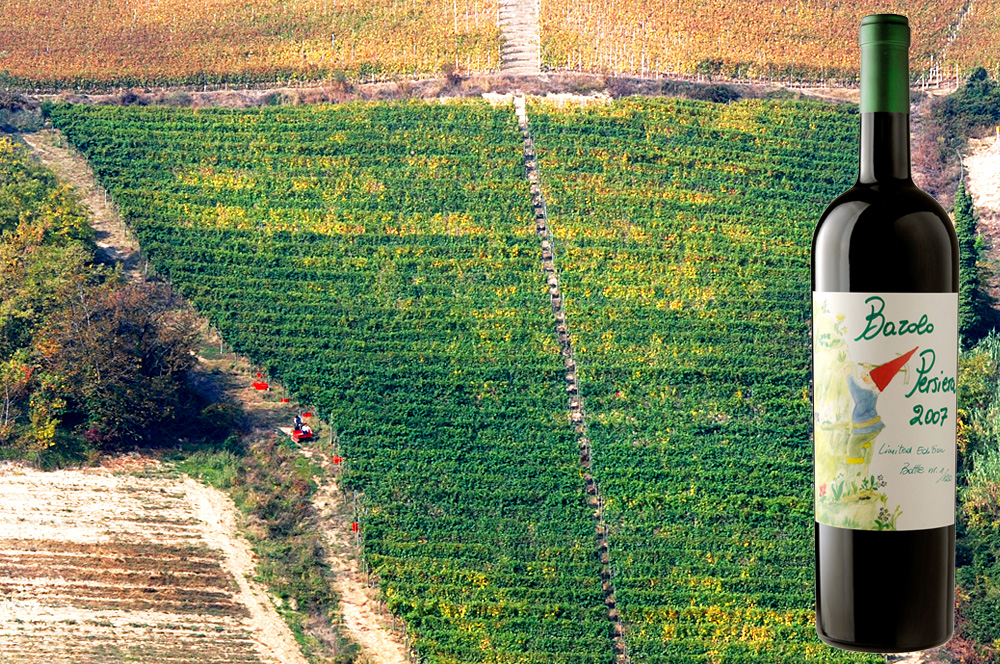
Scrivi un commento
Devi accedere, per commentare.